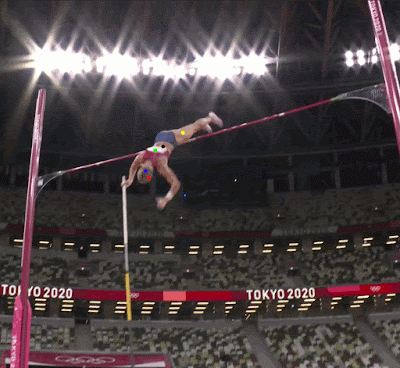I got another lunar question from Papou this week: If the same gun was fired on the Earth and Moon, proportionally, how much further would the bullet travel and would it have a greater velocity?
As I thought about this, there were a couple different effects that could make the bullet go further, so let's see how much each one contributes:
Drag
The most obvious difference between the Moon and Earth is the lack of atmosphere. That will come into a couple of these points, but this is the one most people might think of. When a bullet travels through the air, it needs to push the molecules out of the way. According to Newton, the air will push back on the bullet, creating a drag force:
where ρ is the air density, u is the speed of the bullet, A is the cross-sectional area of the bullet, and cd is the drag coefficient. The drag coefficient depends on the shape of the object, since some shapes are more aerodynamic than others. However, for bullets and other projectiles, people instead use the ballistic coefficient, defined aswhere m is the mass of the bullet. We can combine these to writewhere ad is the drag acceleration. The bullet is slowed down by this drag, meaning it won't get as far before hitting the ground. We can find the ballistic coefficient with tools like this one.
Plugging in some typical values shows that the speed increase is pretty negligible.
 |
| Wikipedia |


















